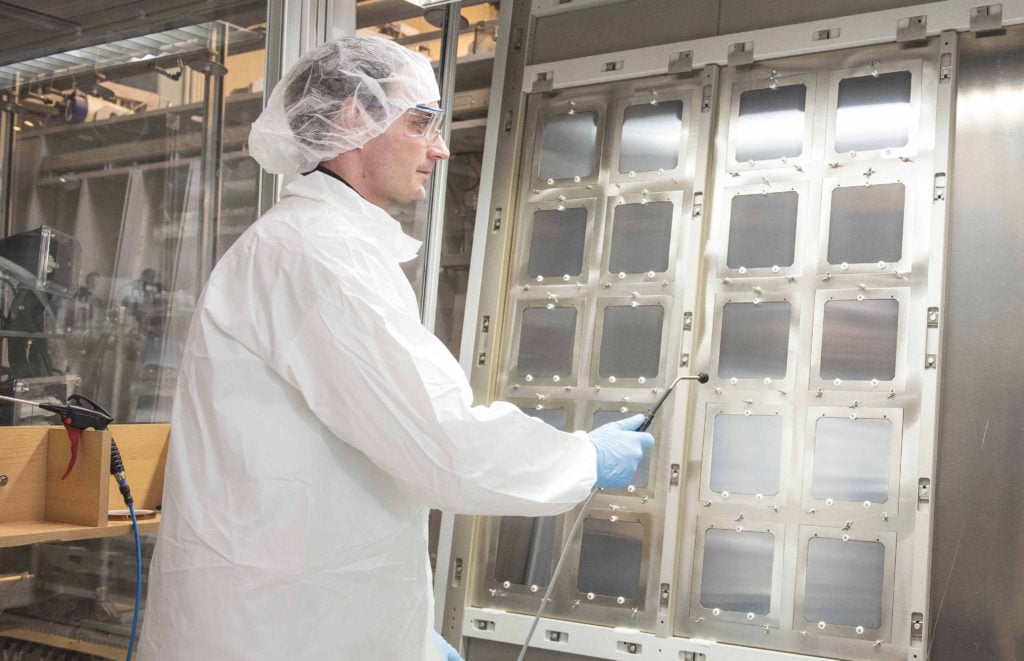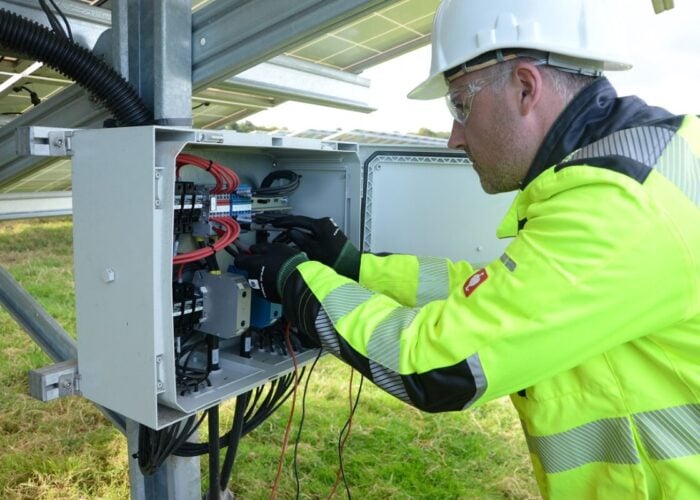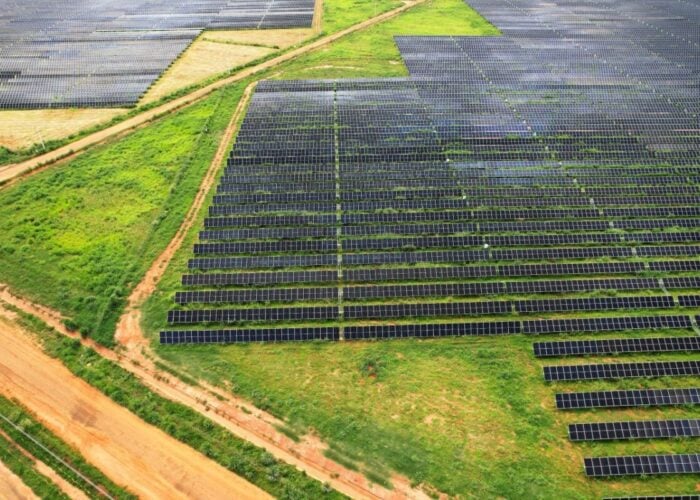
Solar module efficiency and nameplate production capacity are the “most significant” factors in reducing the manufacturing costs of perovskite-silicon tandem solar technology, according to a recent study from the US National Renewable Energy Laboratory (NREL).
The report said that tandem modules need a minimum efficiency of 25% to be competitive with other solar technologies on price. Higher conversion efficiency reduces a module’s cost per watt.
Try Premium for just $1
- Full premium access for the first month at only $1
- Converts to an annual rate after 30 days unless cancelled
- Cancel anytime during the trial period
Premium Benefits
- Expert industry analysis and interviews
- Digital access to PV Tech Power journal
- Exclusive event discounts
Or get the full Premium subscription right away
Or continue reading this article for free
The research also concluded that doubling factory output would achieve the same cost reduction as increasing efficiency by 2.5%.
The NREL researchers, led by Jacob Cordell, found that two-terminal tandem modules have a minimum sustainable price (MSP) of US$0.428/Wdc and four-terminal modules of $0.423/Wdc. This assumes a 25% efficiency rate and a 3GW annual nameplate production volume in the US.
Two-terminal tandem products are those where perovskite and silicon layers are encapsulated within the same cell, whereas four-terminal products encapsulate a perovskite and a silicon cell separately and layer them atop one another.
Cordell said that the paper, published in the journal Joule, answers the question of the “value” of higher efficiency solar products.
“One key takeaway is that a 2.5% absolute efficiency gain in a module provides the same reduction in cost per nameplate capacity as doubling the size of your factory,” he said.
“That shows the power of research for improving the efficiency of the device and reducing the cost per watt of the module.”
The researchers claimed that this study “identifies pathways for tandem modules to compete in cost with incumbent solar PV modules, which already make up the largest generating capacity added to global grids each year. Commercialising tandem modules offers an opportunity to expedite the transition to renewable and sustainable energy sources and improve the value of the energy generating technologies we deploy.”
In one notable detail, the report said that the cell architecture of the silicon bottom cell in a tandem product also had a “significant” impact on cost and competitiveness. Solar manufacturers and research houses are taking different approaches to tandem cells; JinkoSolar recently recorded a new milestone for a tandem cell using n-type tunnel oxide passivated contact (TOPCon) silicon technology, while Hanwha Qcells announced a “world record” efficiency for an industrial-sized tandem cell using PERC technology.
British perovskite company Oxford PV shipped what it called the “first” commercial tandem modules earlier last year, based on heterojunction technology (HJT) cells.
Besides Oxford PV’s announcement, the solar industry is yet to commercialise perovskite-silicon tandem technology at scale. This is largely due to the instability and degradation of the material, which is far more reactive than silicon. PV Tech Premium spoke with Radovan Kopecek last year, co-founder of ISC Konstanz in Germany, who believes that the technology will never progress past niche applications.
However, many of the world’s major solar manufacturers and research institutions are putting significant time and money into perovskite-silicon tandem research. We examined the potential routes to market and the variations in perovskite technology in the most recent edition of our downstream journal, PV Tech Power.






